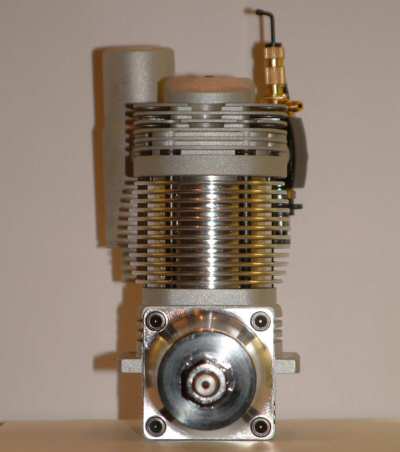 |
Inside the box there is a large amount of plastic bubble wrap, internally wet with oil for safe storage of the engine. Not very much assembly required with the muffler and carb to install.
Every Laser engine is tested at the factory so we know the carburetor is set up correctly.
Instructions are on 2 sheets of A4 which are also available from the web site.In terms of size the engine is rather compact for it's class which is important when building a scale model. In discussion with Neil he commented that the engine would be a little proud of the cowl, but only by 10 mm or so. In his opinion the 150 is preferable for the 1/6 scale Spitfire when flying from a grass field as I will be doing. |






